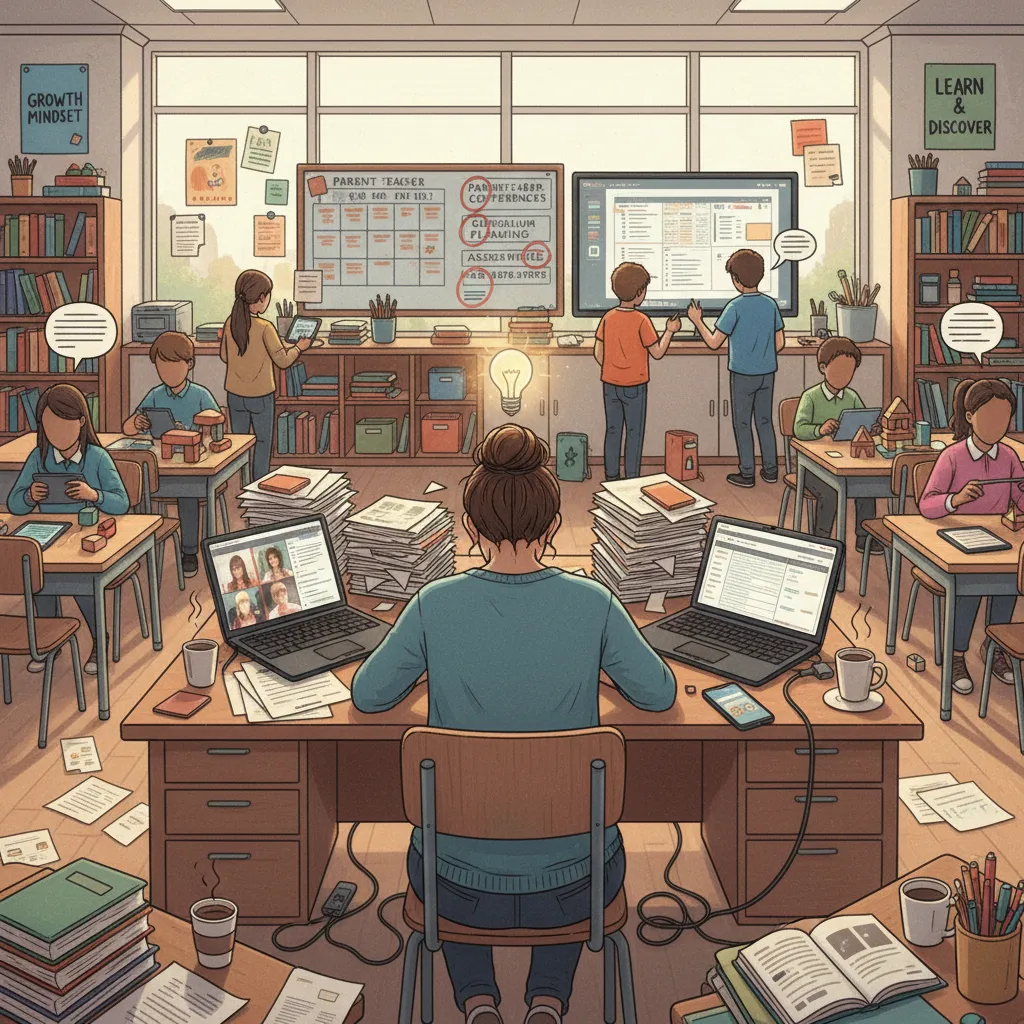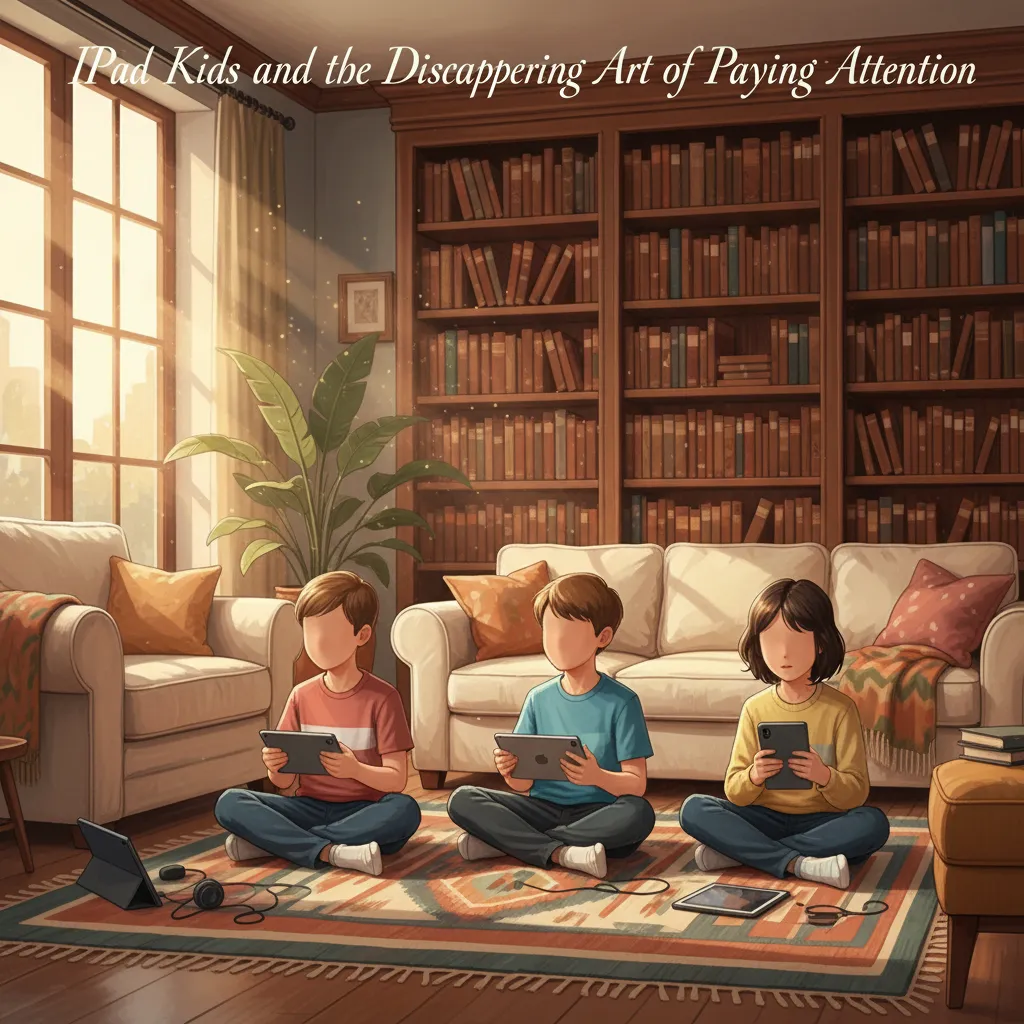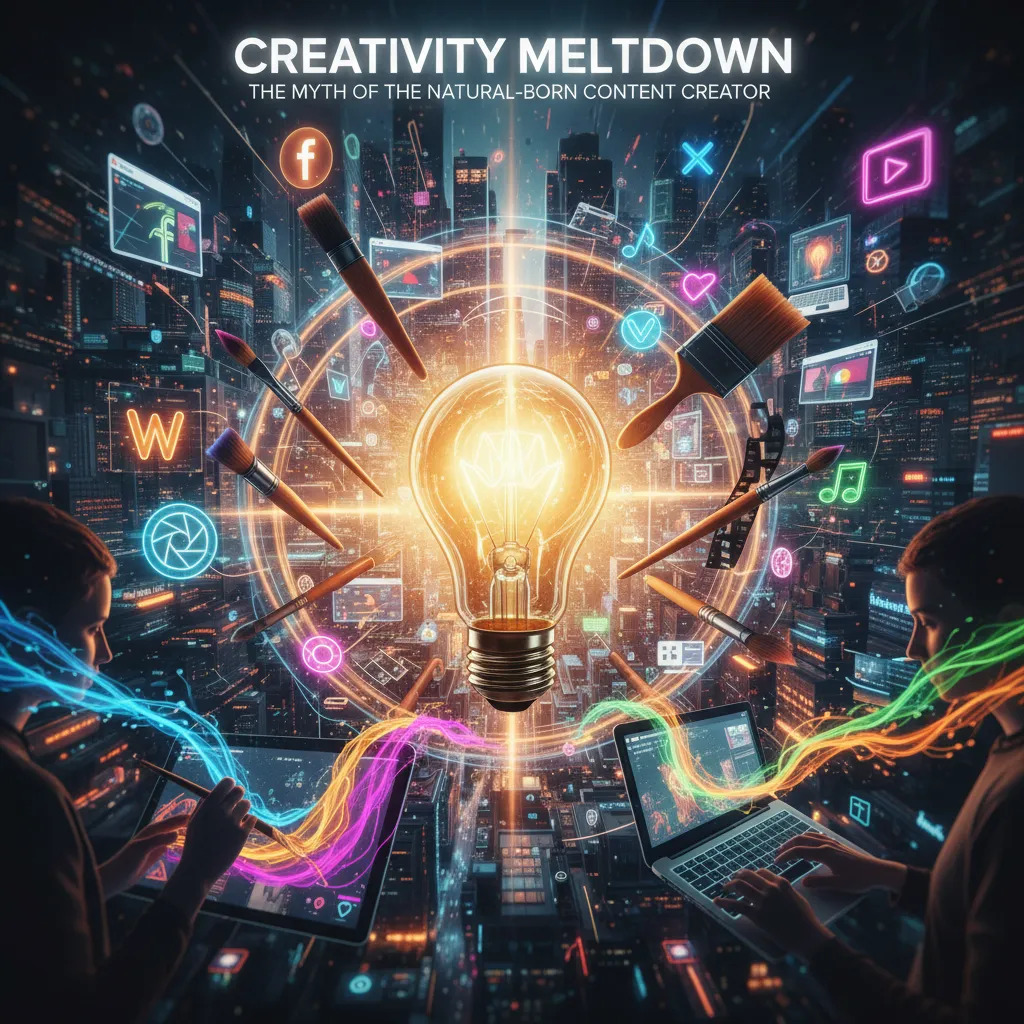I’ll never forget the day I tried to get a fifth-grade class to sit in thoughtful silence for just five minutes. You’d think I’d asked them to solve a Rubik’s cube underwater. In today’s classrooms, it can feel less like teaching and more like wrangling a group of TikTok influencers-in-training, each one glued to their device, their focus ricocheting between Roblox, Fortnite, and whatever meme is trending. But this isn’t another 'kids these days' rant—it's a look at how we actually got here, and what it means for everyone with a stake in Gen Alpha’s future (which is, well, all of us).
Why Teachers Are Hitting Their Limits (and Some Are Walking Out)
If you’ve scrolled through TikTok or teacher forums lately, you’ve probably seen the same stories over and over: teachers at their breaking point, classrooms in chaos, and more educators than ever walking away from the job. Teacher burnout is at an all-time high, and it’s not just about long hours or low pay—it’s the daily struggle with Gen Alpha education challenges, behavioral issues, and the overwhelming impact of digital learning on kids’ attention spans.
Real Stories from the Classroom Frontlines
Teachers across elementary and high school are sharing raw, honest accounts of what it’s like to teach today. One substitute teacher described a sixth-grade class so wild—kids throwing things, singing loudly, climbing over desks—that both the regular teacher and the assistant had “just given up.” After just one day, the sub admitted, “I almost walked out of the class. I was so overwhelmed and overstimulated.”
It’s not just isolated incidents. Many teachers are covering for colleagues on stress leave, especially in “challenging” classrooms where chaos is the norm. One veteran educator, with 50 years in the field, now only takes short-term contracts because full-time teaching has become too much. She reports that even the youngest students struggle with basic skills—many can’t hold a pencil, use scissors, or even regulate their emotions after minor playground disputes.
Behavioral Issues and the Noise Factor
Classrooms are louder than ever. Teachers say students “literally, physically cannot be quiet.” The constant noise—tapping, buzzing, fidget toys , and random outbursts—makes it nearly impossible to teach. One teacher shared, “The overstimulation is just to a max. I can’t even deal.”
It’s not just noise. Teachers are seeing more aggression, defiance, and a lack of respect for authority. As one put it,
“Having to teach and work with your children has been the most traumatic experience of my life.”
Many students don’t respond to consequences or incentives—they simply don’t care. And when teachers try to enforce rules, they risk backlash from parents who are quick to defend their kids, no matter the behavior.
The Disconnect: Teachers vs. Parenting
There’s a growing disconnect between what teachers are expected to do and what parents actually support. More and more, teachers are expected to “parent” as well as educate—handling everything from potty training to emotional regulation. It’s not uncommon for 5-10 kids per kindergarten class to arrive not potty trained or unable to sit still for even a short story.
Online, teachers are sharing their breakdowns—crying after work, feeling undervalued, and questioning if they can keep going. The rate of teachers quitting or taking stress leave is at a historic peak, and with Gen Alpha’s behavioral issues and digital learning distractions, it’s no wonder so many are hitting their limits.

iPad Kids and the Disappearing Art of Paying Attention" />
iPad Kids and the Disappearing Art of Paying Attention
If you’ve ever watched a group of Gen Alpha kids in a classroom, you’ve probably noticed something: it’s almost impossible for them to sit still or focus for more than a few moments. The impact of technology is everywhere—first graders can tap and swipe through apps with ease, but many struggle to hold a pencil or sit through a story. Teachers are sounding the alarm: “ These elementary school kids all speak in brain rot. Nothing but memes. ”
Screen Dependency Is Reshaping How Kids Learn—and How They Don’t
The rise of iPad kids has changed the classroom dynamic. Instead of building patience and focus, many children are used to instant digital stimulation. The result? Attention spans in Gen Alpha are shrinking fast. Some teachers report that students’ focus has dropped to just one second—barely enough time to process a question, let alone answer it.
First Graders Who Can Tap an App but Can’t Hold a Pencil
It’s not just about reading and writing. Many young kids can’t sit through a movie, much less a lesson. In fact, only 33% of fourth graders were reading proficiently in 2022—a number that’s been dropping since 2017. Seventh graders are now performing at a fourth-grade reading level. The student focus issues are real, and they’re showing up earlier than ever.
Fidget Toys and Constant Noise: How Sensory Overload Becomes Normal
Walk into a classroom and you’ll see fidget toys everywhere, kids constantly moving, and a background hum of noise. For many, this is the new normal. Digital literacy is important, but when it replaces playtime and imagination, something gets lost. Teachers report that “iPad kids have no idea how to play with toys and have no sense of imagination and creativity.”
Devices as Pacifiers: The Parenting Shortcut That’s Creating Long-Term Hurdles
It’s easy to hand a child an iPad or put them in front of the TV for a break. But when this becomes the default, it creates iPad kids learning difficulties that last. Kids who grow up with unlimited screen time often struggle with basic self-care—they don’t know when they’re hungry or need the bathroom, and all they want is to get back to their device. As one teacher put it, “Shoving an iPad to a kid’s face to distract them from their emotional needs was the worst thing you can do for a human’s development.”
-
Gen Alpha students perform up to two grades below expected levels
-
Attention spans are vanishing, replaced by a need for constant stimulation
Imagination and patience are in short supply
The impact of technology on Gen Alpha is clear: screen dependency is making it harder for kids to learn, focus, and grow into creative, attentive adults.

When Parents Are 'Phoning It In': The Digital Hand-Off Dilemma
Let’s be honest: parenting in the digital age is tough. Between work, endless notifications, and the constant pull of screens, it’s easy to see why so many parents feel overwhelmed. But teachers across the country are noticing a new trend—parents are increasingly “phoning it in,” handing off basic parenting duties to schools and devices. This digital hand-off is creating real challenges for Gen Alpha students, especially when it comes to social-emotional learning and student behavior.
The Basics Are Being Outsourced
Ask any teacher, and you’ll hear stories about kids showing up to kindergarten not knowing how to use the bathroom independently, say “please” and “thank you,” or even answer to their own names. One teacher put it bluntly:
“Please, start saying your child's legal name that's on their birth certificate before they start school.”
It sounds simple, but it’s a real issue. Teachers report that multiple students each year don’t recognize their own names during roll call. Why? At home, they’re only called by nicknames like “Little Man,” “Princess,” or “Papi.” When teachers use the name on the roster, kids look confused or don’t respond at all.
The 'Birth Certificate Name' Crisis
This isn’t just about names—it’s about identity. If a child doesn’t know their own legal name, how can they feel confident or secure in a new environment? It’s a small but telling sign of a bigger problem: parents are so distracted or busy that even the basics are falling through the cracks. In some classrooms, 5-10 kids start kindergarten not potty trained. Teachers are left to manage not just academics, but also the social and emotional basics that used to be taught at home.
Too Hands-Off, Too Distracted, or Just Overwhelmed?
Is modern parenting too hands-off? Or are parents just overwhelmed by the pressures of the digital age? Many admit to relying on tablets and phones as babysitters. But this “digital hand-off” means kids miss out on real conversation, outdoor play, and sensory-rich experiences—all crucial for developing self-regulation and respect for authority. As one substitute teacher shared, “Every single kid thinks they’re going to be a content creator,” and their hobbies revolve around video games or addictive apps.
The Growing Divide: Home vs. School Expectations
Teachers are pushing back. “I’m here to be your teacher, not your parent,” one educator said. The gap between what’s expected at home and what’s needed at school is widening. Schools can’t be both home and classroom. For Gen Alpha, the challenge is clear: without strong foundations in manners, self-control, and identity, students struggle to sit still, focus, and learn. The digital age demands a new balance—one where parents reclaim their role in teaching the basics, and schools can focus on education, not just behavior management.

Creativity Meltdown: The Myth of the Natural-Born Content Creator
Ask any Gen Alpha kid, “What are your hobbies?” and you’ll likely hear about their favorite video game or the YouTuber they want to become. The question has shifted from “What do you love doing?” to “Which game do you play the most?” or “What do you stream?” It’s a massive cultural shift. As one observer put it:
“Gone are the days dreaming about being an astronaut or a professional athlete. Now everybody wants to stream Roblox or Fortnite.”
From Playgrounds to Platforms: The New Dream Job
Today’s kids aren’t just watching content—they’re convinced they’ll be the next big creator. But let’s be real: not everyone can be Mr. Beast. The dream of becoming a famous streamer or YouTuber is everywhere, but the reality is that the market is already crowded. If every kid is making content, who’s left to watch?
The Creative Cost of Constant Digital Intake
Here’s the tough truth: when kids spend all their free time consuming ready-made digital content, their own creativity takes a hit. Teachers and parents notice that fewer kids have hands-on hobbies or know what truly brings them joy outside a screen. Instead of drawing, building, or exploring, many kids default to scrolling and gaming. This constant digital intake means imagination doesn’t get a chance to stretch or grow.
-
Drop in traditional hobbies: Research shows a clear decline in off-screen activities and creative play among Gen Alpha.
-
Loss of self-awareness: Many kids can’t name their favorite offline activity—or even recognize when they’re hungry or need a break—because their focus is glued to devices.
-
Creativity decline: Unrestricted internet access and endless content can actually impair creative thinking and problem-solving skills.
Are These ‘New Skills’ Job-Market Ready?
There’s a big question about future job prospects. Sure, digital literacy is important, and some kids will build real skills editing videos or coding mods. But most content creation today is about quick entertainment, not critical thinking or communication. If a child can’t put down their phone for five minutes, write their name legibly, or spell basic words, are they really ready for tomorrow’s workforce?
Consider this: only 33% of fourth graders were proficient in reading in 2022. As more time goes to screens and less to reading, writing, or real-world interaction, Gen Alpha’s future job prospects could suffer. The digital content effects are mixed—while some tech use can spark learning, too much can melt attention spans and creativity.
What’s Lost When Offline Interests Disappear?
When hobbies are defined by digital consumption, kids lose out on discovering what truly excites them. Teachers say they can instantly spot which students are “raised on an iPad”—these kids struggle with creativity, focus, and basic social skills. The world is changing fast, but critical thinking skills and genuine creativity are still the keys to future success.

Hope, Frustration, and the Real Fixes: Where Do We Go from Here?
Let’s be real: teaching Gen Alpha in the age of noise, iPads, and melted attention spans can feel like trying to hold back a tidal wave with a broom. The frustration is real—teachers are burning out, parents are overwhelmed, and kids are struggling to focus, connect, and care. But here’s the thing: there is hope, and it starts with setting boundaries and getting back to basics, for both kids and adults.
First, you need to set parameters with your child today. This is life or death. What job do you think they're going to get if they can't put their phone down for five minutes? It sounds dramatic, but the stakes are high. If a child can’t write their name legibly, spell simple words, or focus on a conversation, their future options shrink. It’s not just about screen time—it’s about building real-world skills and emotional resilience.
One of the most effective educational strategies is to create structured screen time and device-free zones. This isn’t just for kids—grown-ups need to model healthy tech habits too. If you find yourself glued to your phone, it’s time to set your own boundaries. Remember, kids learn more from what you do than what you say.
Outdoor learning benefits can’t be overstated. Rediscovering hands-on, sensory-rich experiences—like playing outside, building things, or simply exploring nature—helps children self-regulate and sparks creativity. Teachers can instantly spot the difference between “iPad kids” and those who play with real toys. The former often lack imagination and struggle with social-emotional learning. So, maybe it’s not too late to bring back recess, field trips, and unstructured play.
Social-emotional learning (SEL) and basic skills need a comeback—no app required. While digital SEL curriculum can support mental health and academic outcomes, nothing replaces face-to-face conversations, empathy, and learning how to handle frustration. Schools and parents must coordinate, working together instead of tossing responsibility back and forth like a hot potato. Systemic issues in education won’t fix themselves, but a community approach can move the needle.
Here’s a wild thought: what if you took away all devices for one full week? Would everyone survive? The answer is yes—and you might be surprised at what your family or classroom discovers about connection, creativity, and resilience. Tech is here to stay, but it needs guide rails. The real fix is a balanced approach: structured tech use, outdoor learning, and a renewed focus on social-emotional and basic academic skills. It’s not easy, but it’s possible. And it starts with us—right now.



